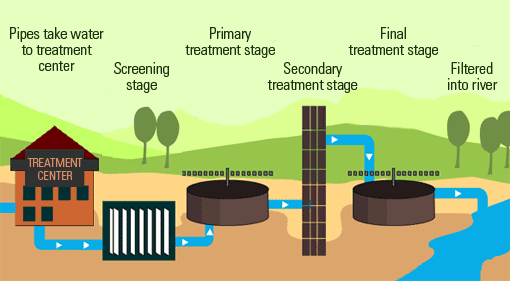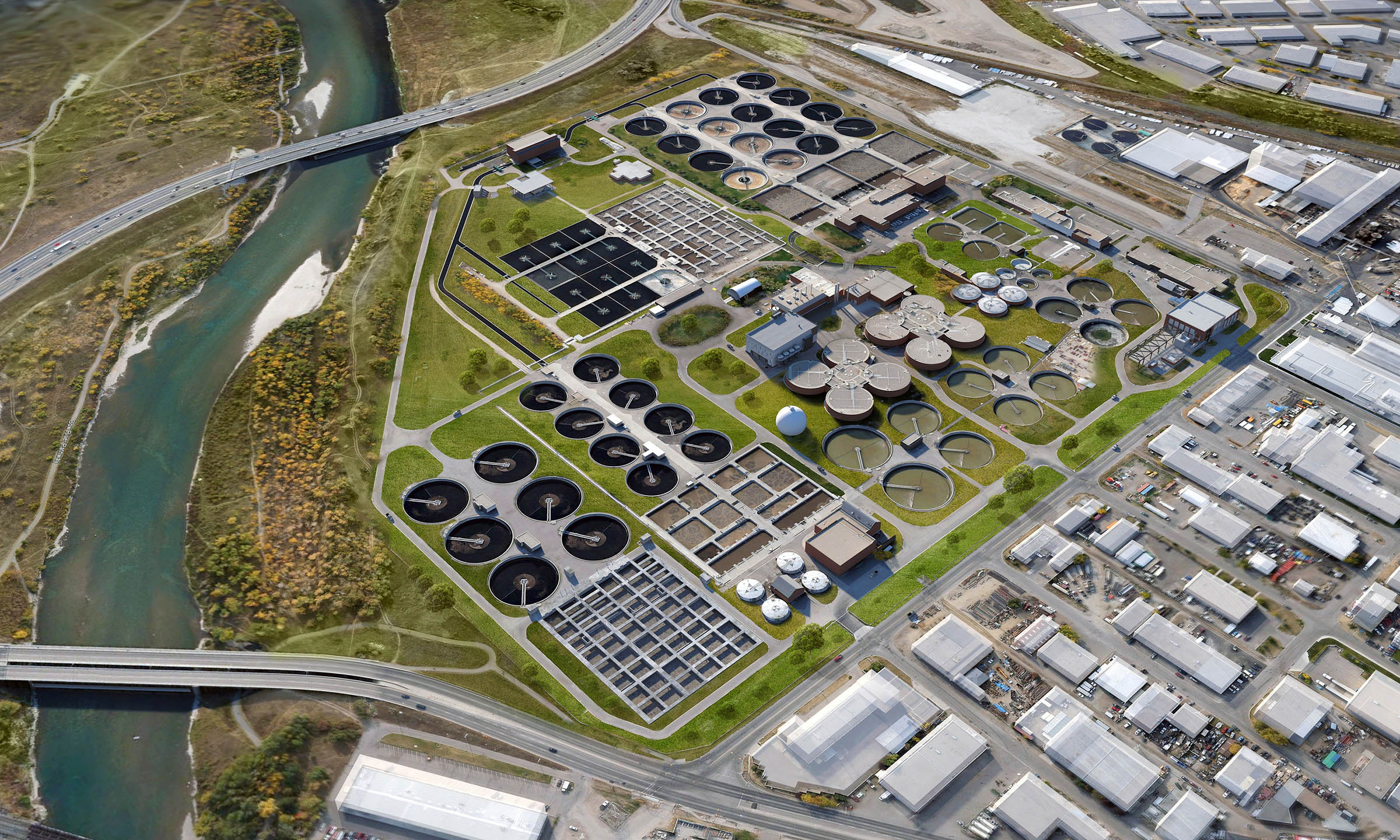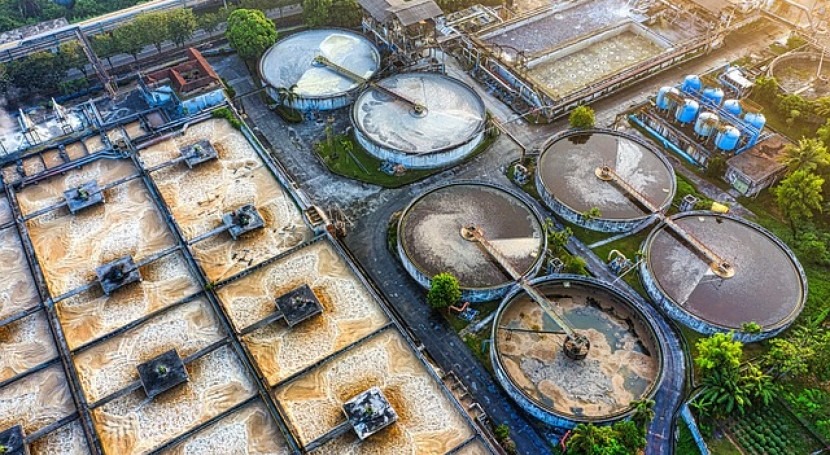Ecological Impact of Waste Water Treatment: What You Required to Know
Wiki Article
Strategic Approaches to Enhance Waste Water Treatment Performance and Lessen Environmental Impact
In the world of waste water treatment, the pursuit for enhanced performance and decreased ecological influence is a perpetual difficulty that demands calculated solutions. As culture grapples with the crucial to manage water resources sustainably, a nuanced technique becomes essential. The combination of advanced therapy modern technologies, energy-efficient processes, source recuperation approaches, boosted nutrient elimination strategies, and smart monitoring and control systems represents a multifaceted framework for dealing with these pressing problems. However, what lies at the core of this complicated internet of methods is the possible to revolutionize the method we approach waste water treatment, not equally as a process of disposal, but as a beneficial opportunity for technology and environmental stewardship.Advanced Treatment Technologies
Advanced membrane layer filtration systems have actually revolutionized innovative wastewater treatment processes, significantly improving the elimination of impurities. This modern technology has proven to be very reliable in removing a vast range of pollutants, including pharmaceuticals, heavy metals, and natural compounds, which are often testing to remove via conventional therapy methods.In addition, membrane layer filtering systems supply countless advantages over standard therapy strategies. They call for much less room, generate higher-quality effluent, and are much more immune to variations in influent water high quality. Additionally, these systems are very flexible and can be easily integrated into existing therapy plants or used as standalone devices for decentralized applications. As the demand for clean water remains to rise, the fostering of advanced membrane filtration modern technologies is vital to make sure effective and lasting wastewater treatment practices.
Energy-Efficient Processes
The combination of energy-efficient processes in wastewater treatment systems is important for optimizing source utilization and minimizing operational expenses. One key approach to boosting power effectiveness in wastewater therapy is the utilization of sophisticated oygenation systems, such as great bubble diffusers or surface area aerators, which can enhance oxygen transfer performance and minimize power usage.Additionally, maximizing procedure control and automation through the usage of sophisticated sensors and checking systems can enhance general energy efficiency by adjusting operations in real-time based upon real need and problems. Carrying out energy audits and frequently checking power performance indications are necessary techniques to recognize areas for improvement and track energy-saving campaigns efficiently. In general, the adoption of energy-efficient procedures in wastewater therapy not just benefits the environment but also contributes to long-term cost savings and operational sustainability.
Source Healing Strategies
With an emphasis on maximizing resource usage and sustainability in wastewater treatment systems, the execution of resource healing techniques emerges as a critical facet in improving operational performance. Source recuperation methods in wastewater treatment involve the identification and extraction of important resources from the waste stream, therefore transforming what was once taken into consideration waste right into an important property. By applying source healing techniques such as nutrient elimination and recovery, energy generation from raw material, and the production of multiple-use water, wastewater therapy plants can decrease ecological influence while making best use of efficiency.
Improved Nutrient Removal Methods
Executing innovative nutrient removal techniques is crucial for maximizing the effectiveness of wastewater treatment systems. Improved nutrient removal plays a critical function in minimizing the environmental impact of cured effluent discharged into water bodies. Among the essential strategies used for enhanced nutrient removal is the process of organic nutrient removal (BNR), which entails the elimination of nitrogen and phosphorus through biological processes. This can be achieved through using specialized microbes that can convert nitrogen substances into inert nitrogen gas with denitrification, and build up phosphorus within their cells with a procedure called improved organic phosphorus removal (EBPR)
Along with BNR, progressed treatment approaches such as membrane layer bioreactors (MBRs) and created wetlands can also be used to improve nutrient elimination performance. MBRs utilize membrane layers to achieve top notch effluent standards by effectively removing nutrients and put on hold solids. Created wetlands mimic all-natural wetland processes to get rid of nutrients with plant uptake, microbial activity, and sedimentation. By incorporating these sophisticated nutrient removal techniques into wastewater therapy systems, sectors and districts can properly reduce nutrient contamination and protect the setting.
Smart Monitoring and Control Equipment
Utilizing innovative modern technology, the click here for more info integration of clever tracking and control systems transforms the functional performance of wastewater treatment centers. These systems include advanced sensing units and information analytics to continually monitor crucial specifications such as pH levels, turbidity, dissolved oxygen, and circulation prices in real-time. By gathering and analyzing this data, operators can obtain important insights into the performance of the treatment processes, allowing positive adjustments to maximize therapy efficiency.Smart tracking and control systems additionally sustain remote tracking abilities, enabling drivers to gain access to real-time data and control features from off-site places. This remote access improves functional flexibility and responsiveness, enabling swift treatments in situation of system breakdowns or variations in influent quality. The anticipating maintenance capacities of these systems help protect against equipment failures and decrease downtime, inevitably enhancing the general dependability of wastewater therapy procedures.
Final Thought
Finally, strategic approaches such as innovative therapy innovations, energy-efficient procedures, resource healing methods, boosted nutrient removal strategies, and smart surveillance and control systems play a crucial role in improving wastewater therapy effectiveness and decreasing ecological influence. By implementing these strategies, wastewater therapy plants can improve their overall performance, reduce power usage, recover beneficial sources, and make sure conformity with ecological laws. These strategies are necessary for lasting and effective wastewater management practices.
In verdict, calculated methods such as advanced treatment modern technologies, energy-efficient procedures, resource recovery methods, enhanced nutrient elimination methods, and smart surveillance and control systems play an essential duty in enhancing wastewater therapy performance and reducing environmental effect.
Report this wiki page